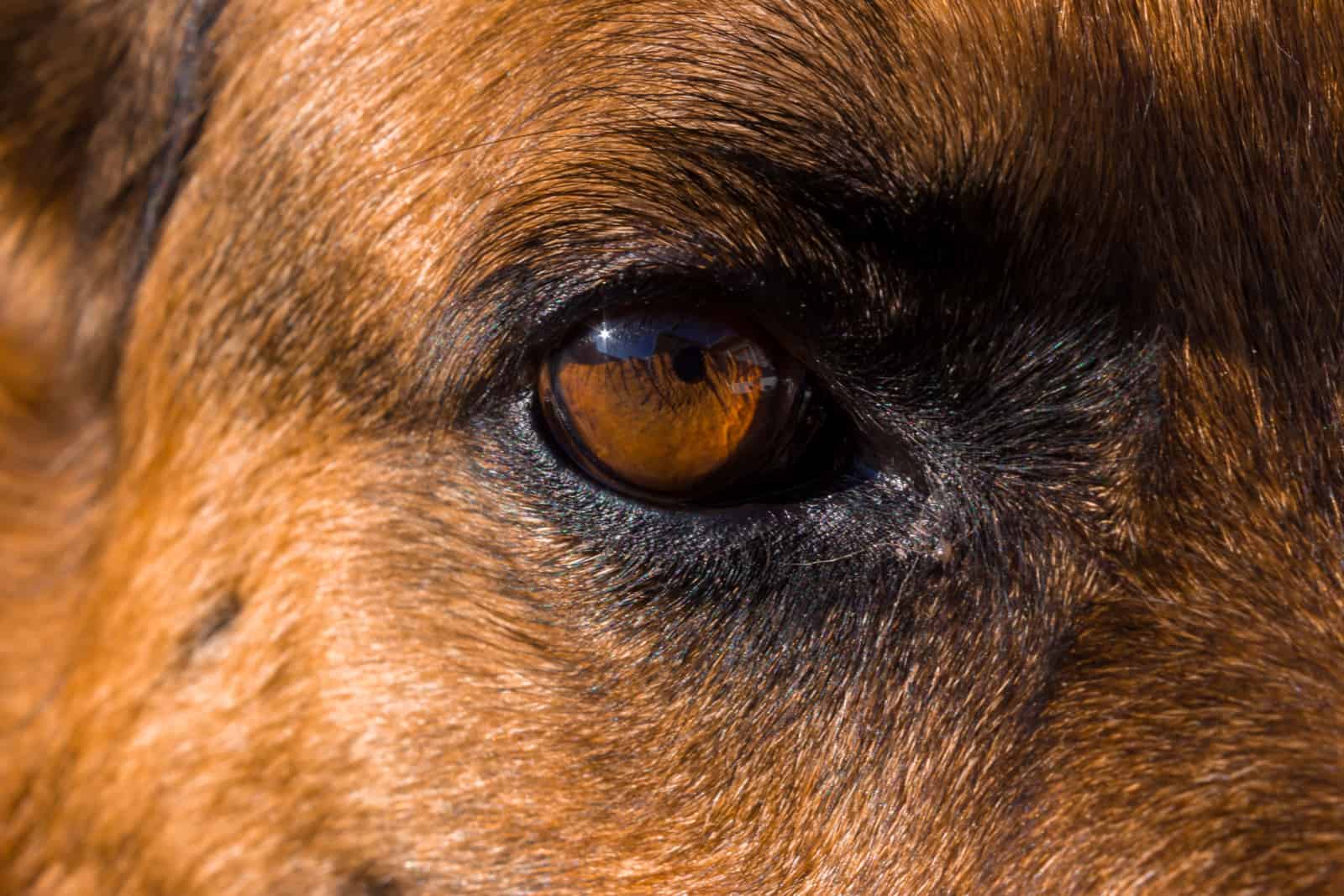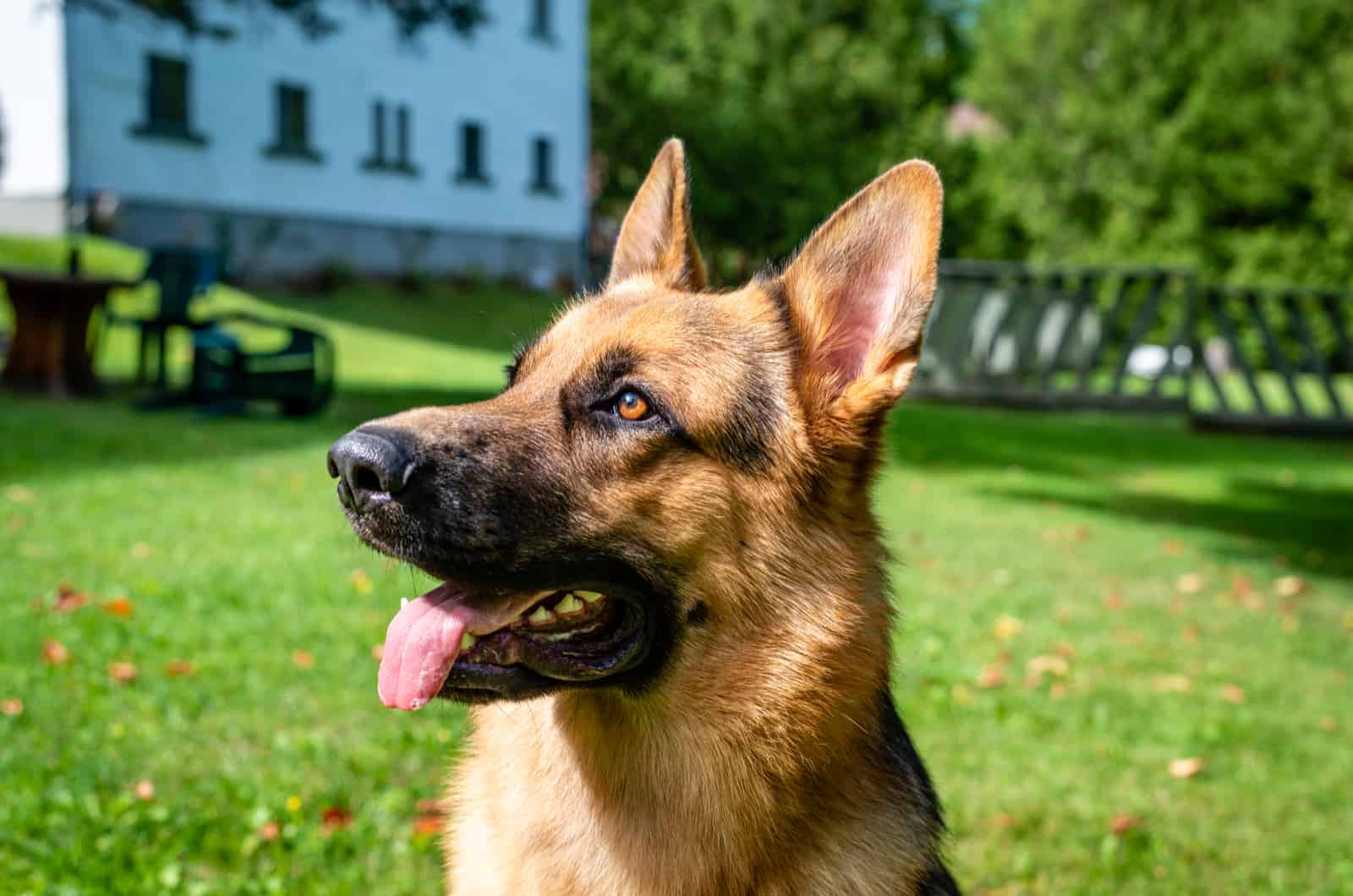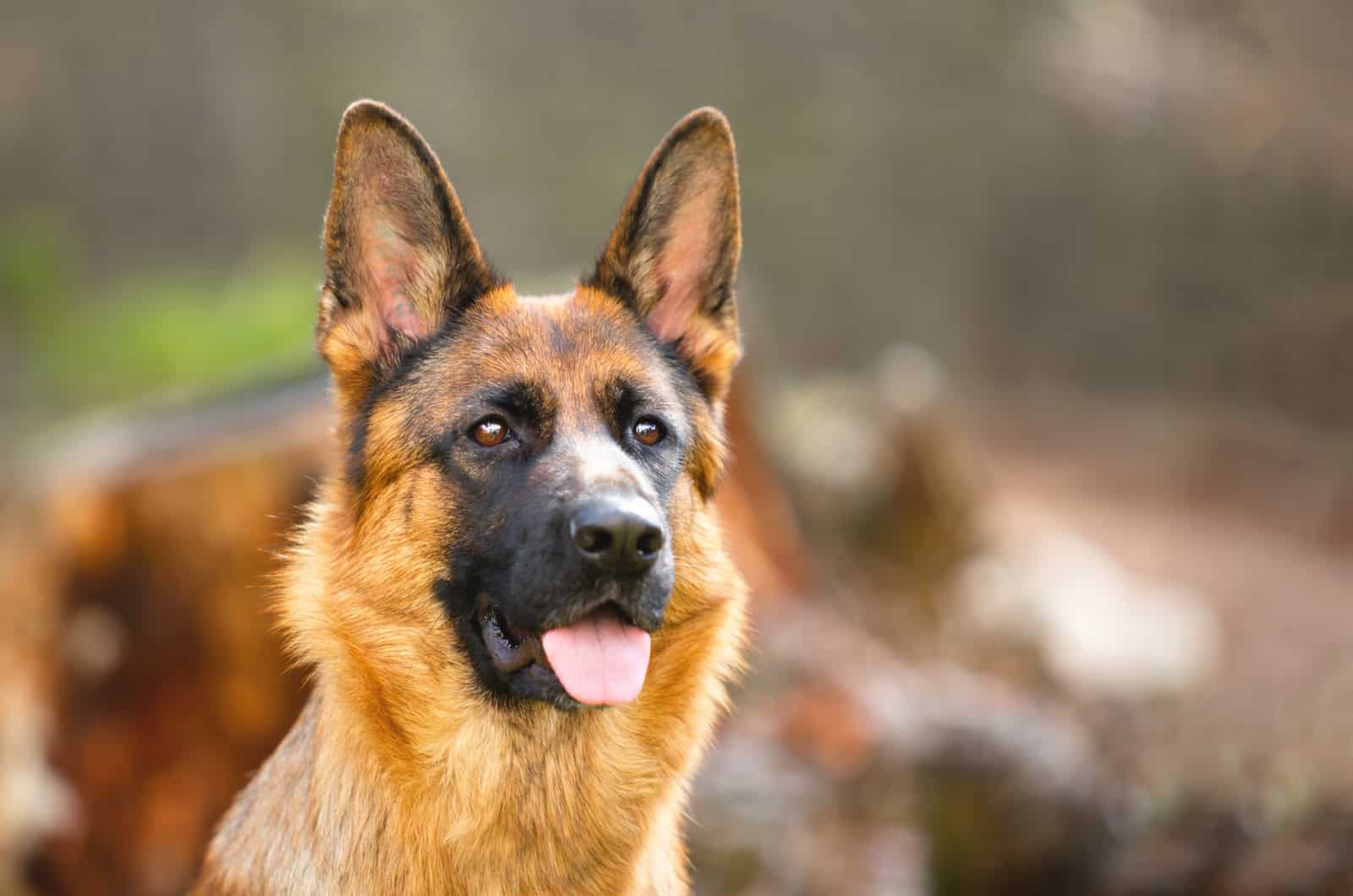In your German shepherd’s eyes, you are the most beautiful owner in the world. However, playing fetch and wondering how your GSD is not seeing the stick on the ground right in front of it begs the question are German shepherds color blind?
Well, their eyes work in mysterious ways, and science is still not fully aware of the way a dog’s eye sees the world. However, we will discuss what is known for certain in this article, and you will finish reading this article with more knowledge in the bank.
You will also try and experiment with different-colored toys and objects as I, and probably everyone aware of this fact, did once the information was confirmed.
Evidence Suggests German Shepherds Have Yellow-Blue Dichromatic Vision

People can be colorblind too, and the definition of color blindness means you either cannot see the difference between colors or can only see certain colors. German shepherds, and other dogs too, do not distinguish red and green.
Now you get why a reddish toy or stick of wood in green grass makes it a tough find for your German shepherd. Human eyes that are affected by red-green color blindness have the closest insight into how the canine eye interprets color information.
What evidence am I talking about here? Well, Ishihara’s test principle used to diagnose red-green color blindness in humans has proven itself useful in doing the same with dogs. Of course, the execution of it had to be adapted in a way that provided understandable feedback to scientists.
The dichromatic aspect of dog vision means they are able to fully differentiate only two colors, yellow and blue. Reds and greens are most likely just dark browns and shades of gray, while violet and greens with bluish undertones are variations of the blue color.
If your German shepherd is staring at you with purpose, he might be appalled by your sense of fashion. Do not blame the dog for only seeing two fashion-forward colors.
Wait, Humans Can See Better Than Dogs?

Although this answers the question, “Are German shepherds color blind?”, there is much more to it than meets the eye (pardon the pun). Does that mean we have an upper hand over dogs in terms of vision?
You should not jump at the prospect of having superior vision over your dog because the German shepherd is effortless in detecting motion and their eyes are much better equipped to handle low light conditions.
No, a dog will not be able to distinguish between subtle differences in brightness, but it will have an edge over you during nighttime. Night vision is a trait that was inherited from their primal ancestors, the wolves. Its purpose is quite clear — to see the prey better.
During the day, however, a healthy human eye will see everything more clearly and in its full range of colors. Next time you are choosing a raincoat for your German shepherd, choose as if you had human color blindness.
Are All Dogs Colorblind?
So far, there has not been proof of any dog breed seeing a different or full spectrum of colors (from a human eye’s perspective).
Interestingly enough, German shepherd dogs and all other dog breeds showed the exact same red-green color blindness, without any variations in the spectrum of colors they can see, based on current studies.
Still, dogs with complete color blindness are not considered to have normal vision. Seeing only yellow and blue colors is the “norm” for color recognition in canines, but seeing only grayscale is still deemed as an impairment.
If you ever bought your dog a red ball, you probably witnessed the struggle of locating it in the green grass in your yard or outdoors. When shopping for your German shepherd’s favorite items, get a blue and yellow ball to help it differentiate them.
Food bowls that are red or green and everything in between are hard to see for your German shepherd, so your GSD being skinny might be because you made the bowl invisible (highly unlikely).
What Is The Neitz Color Vision Lab And Who Is Stanley Coren?

The Neitz color vision test was the brainchild of the experts at the Eye Institute of the Medical College of Wisconsin. Its availability, ease of use, and low cost helped countless children and adults to be diagnosed with vision deficiency.
Its application for testing dogs was based on the Ishihara test given to people who have deuteranopia (red-green color blindness). The findings that resulted from using this test on dogs have been instrumental in understanding phenomena in general animal psychology.
Stanley Coren is a Professor Emeritus at British Columbia University’s Department of Psychology. As a writer with decades of experience studying canine history and behavior, he spent most of his life revealing the unknowns of the dog world to us.
Professor Coren’s first passion was vision and visual processes, so he talks extensively about dogs’ vision and its workings in the book The Intelligence of Dogs. However, he was not the first to suggest dogs did not see the entire spectrum of colors.
Allegedly, the first person to express the belief that dogs are color-blind was Will Judy. As the founder of National Dog Week, his life’s work was mostly dedicated to exploring the ins and outs of everything dog.
Of course, his grayscale vision theory was disproved by the Ishihara test custom-made for dogs, so why don’t we take a look at what the original and doggy versions look like?
Deuteranopia (Ishihara’s) Test
Back in 1917, Shinobu Ishihara, the maker of the deuteranopia test, created a sequence of thirty-eight pseudoisochromatic plates. Each of the plates consists of a dotted pattern in different colors.
Numbers or lines, of seemingly random colors, formed by the dots appear on each individual plate. Some are purposefully created for people with red-green color blindness, while others are tailored for people who can see the full spectrum of colors.
So, how was this test adapted for testing dog vision? Cat people look away right now. Instead of numbers and still images (numbers), scientists created an animation of a cat running.
One set of plates with dotted patterns had a red cat animation based on Ishihara’s plate number twenty-two, while the other one was plate number six. The difference between them is that the latter has fewer red dots in a red-green combination of subject vs background.
Dogs showed clear reactions to the number twenty-two plate, but the plate number six variant had results that confirmed a lower response to the visual stimulus. Are German shepherds color blind? Not completely, but it is possible.
The Anatomy Of A German Shepherd’s Eye

Seeing fewer colors than a normal human eye is a very disconcerting thought for us, but dogs do not see the entire color spectrum anyways, so who cares about human vision?
Certain aspects of dog physiology in the vision department are believed to be behind the fact dogs cannot see red and green very well. Most of the structural elements are similar to the anatomy of the human eye, but there are two of those we do not have.
The sclera is the glossy, firm but flexible, white part that we can colloquially call “white of the eye”. Right on the front of it is the cornea, whose role is protective and vision-functional.
A dog’s eyelids have a relatively thin lining that is called conjunctiva and if you ever heard of conjunctivitis, that is the part that gets inflamed or infected. Controlling the muscles to dilate or constrict the pupil is the iris.
This is the colored part of the eye we all know and love in our dogs. Situated at the center of the iris and functioning as a camera shutter is the pupil. Dilated pupils let more light in (in the dark), while constricted ones restrict the amount of light (looking at the source of light).
Wondering how many color options there are for German shepherd dogs? We have an article that lays them all out for your reading pleasure.
To have a clear image in our brain, the lens adapts its shape to focus on the retina. Speaking of retinas, they are the farthest part of the eye and contain rods. These are one of the two photoreceptors types found in the retina.
While rods act as movement and light sensors, the photoreceptors that collect color information are called cones. Just like LED screens have three colors to represent the entire spectrum, the human eye has three types of cones — red, green, and blue. Dogs only have two types.
The Difference Between Human And German Shepherd Eyes

Two main structural differences include the tapetum lucidum and the third eyelid. The former is placed right behind the retina and its use is to increase the amount of light that hits the photoreceptors.
A tapetum lucidum improves the dog’s vision in low light, allowing it to see movement better. If you ever noticed your dog or cat appearing to have glowing eyes when lights hit them at night (or in photos), that is because of the reflective membrane.
Another difference is the third eyelid or nictitating membrane. It contains a gland that produces a liquid that, together with tears, lubricates the eye. The other role is protecting the eye from debris and scratches.
Eye placement plays a major role in dogs. Human eyes are placed frontally and spread relatively close, while dog eyes are positioned on the sides of their head. This gives German shepherds a wider field of view compared to human eyes.
When it comes to night vision, the higher number of cones allows them to see things better in dim light and detect movement much better than we do. The reflective membrane, larger pupils, and a tighter position of the retina and lens make low-light vision in dogs even better.
However, dogs have a visual acuity of 20/75, which means they are essentially shortsighted. Do not go running to get your dogs glasses as this is normal for them. Seeing-eye dogs, like Labrador retrievers, have an acuity that is almost as good as humans (20/20). Neat, right?
In bright-light conditions and with a 20/20 acuity, humans see things more clearly, which is why dogs have trouble finding their dog toys the further you toss them. This is why you will see most GSDs rely on their sense of smell to precisely locate an object.
Summing Up The Colors

Now that you know the answer to “Are German shepherds color blind?” is yes, there is only a need to make things easier on them by buying yellow or green toys in the future if you like quick retrieval and teaching your dog to discern different objects.
If their favorite toy is red or orange, do not throw it away. They can still smell it and enjoy the fun. Although you might have known that dogs do not see all the colors in the spectrum, now you know which ones they can successfully process.
The knowledge of other dog eye facts will come in handy as well, so feel free to test things out with your German shepherd. A great thank you goes to the cats that modeled for the Ishihara test for dogs. If you have a cat, here is how good GSDs are at cohabitating with them.













